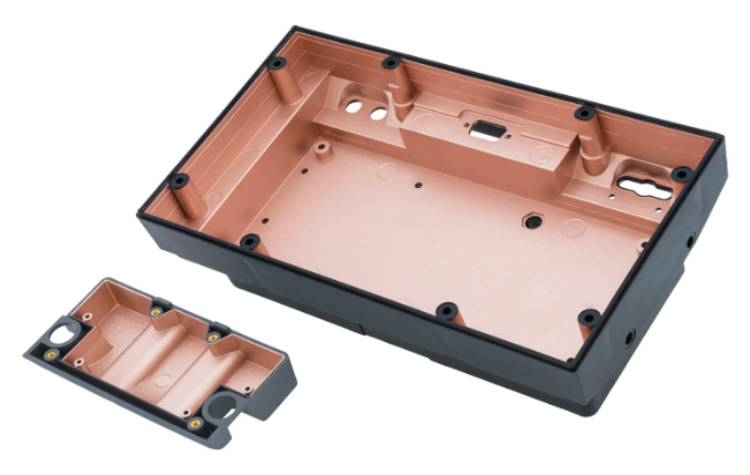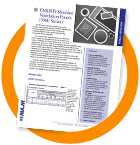There is no doubt that plastics have their design advantages when building many hardened enclosures. Plastics products in various forms, such as acrylics, ABS or structural foams, are quick and inexpensive to produce once tooling is in place and can be molded or configured in complex designs much more readily than some other substrates. But because plastics are electrical insulators which easily allow EMI or RFI waves to penetrate the substrate, conductive coatings, i.e. conductive paints, pick up the slack where plastic alone would allow failure of your hardened enclosure. It becomes imperative, therefore, to consider conductive coatings when using plastics. Once painted, your plastic enclosure offers superior EMI/RFI attenuation while also suppressing electrostatic discharge.
The Advantages of Conductive Coatings
Our Conductive coatings typically have just under 25% solids of non-oxidizing copper which, when mixed thoroughly, gives the plastic surface its conductivity. Even a piece of paper can be made conductive with a swipe of the coating. But the real beauty of today’s conductive paints lies in its low cost, ease of use and flexibility during production. “Advantages are particularly evident when conductive painting is compared to alternative conductive coating technologies, including vacuum aluminum and selective plating. These advantages include:
- Adaptability to a wide range of product designs and part sizes.
- Economy in achieving an effective coating solution.
- Rapid scalability for volume production that minimizes capital investment.”
 With strong adhesion, MAJR’s conductive coating quickly covers the surface area and can even be resprayed (to build to a desired thickness or to ensure total coverage in difficult-to-reach part designs) as flash off between coats is fairly short. For small production runs or prototypes, the conductive paint can be applied manually with a typical high volume, low pressure (HVLP) paint gun or standard air gun. When selective coating is needed, chosen areas of the plastic surface can be simply masked off – much simpler than consecutive plating dips or expensive vacuum systems.
With strong adhesion, MAJR’s conductive coating quickly covers the surface area and can even be resprayed (to build to a desired thickness or to ensure total coverage in difficult-to-reach part designs) as flash off between coats is fairly short. For small production runs or prototypes, the conductive paint can be applied manually with a typical high volume, low pressure (HVLP) paint gun or standard air gun. When selective coating is needed, chosen areas of the plastic surface can be simply masked off – much simpler than consecutive plating dips or expensive vacuum systems.
Conductive Paint Performance
Of course, no discussion about the use of conductive coatings for plastics when it comes to hardened enclosures could be complete without talking about performance. Once again, conductive paint technology rises to the occasion. With attenuation of EMI/RFI signals of more than 75dB from frequencies of 1 MHz to 1 Ghz, (for MAJR Products coatings) the conductive paint exceeds performance requirements if “SE in the 10 to 40 dB range for civilian applications, and in the 30 to 60 dB range for MIL-461, are [recognized as] generally adequate at the worst offending frequencies.” Consult MAJR experts for specific guidance for your particular application.) In addition, MAJR conductive coatings show no change in resistivity or attenuation when tested for humidity resistance by recognized military and UL standards.
Conductive Coatings
- Cost Effective
- Easy to Use
- Superior Attention
MAJR Products has been a recognized manufacturer of EMI/RFI shielding products for 25 years. We are a supplier to some of the most respected names in the civilian and defense industries and we have the expertise to solve all of your EMI shielding problems or supply all of your hardened enclosure parts needs. For more information, ask a MAJR Products professional about our conductive coatings, their specifications and use for various types of plastic enclosures.
Resources:
Interference Technology
Electronic Environments

